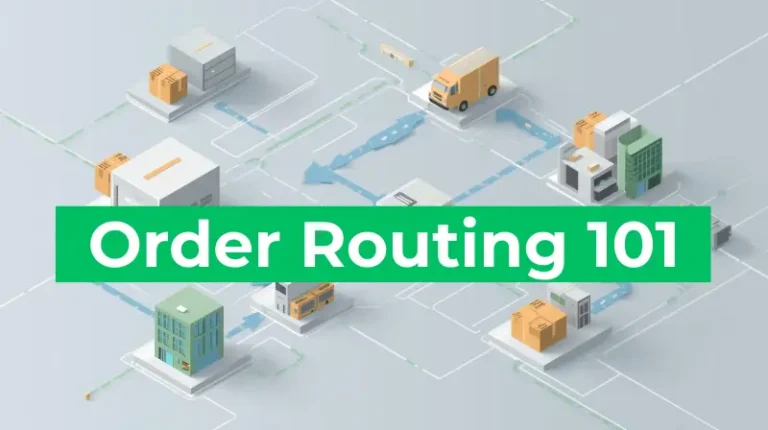Why DDP Shipping Is The Smarter Choice For International Ecommerce

Last updated on July 28, 2025

In this article
 13 minutes
13 minutes
- What Is DDP Shipping?
- Understanding DDP Incoterms and Agreements
- DDP vs. DDU: Why It Matters
- How Customs Delays Destroy the Experience
- The True Cost of International Shipping
- DDP Agreement Responsibilities and Obligations
- When to Use DDP Shipping
- Disadvantages of DDP Agreements and Potential Risks
- How to Set Up DDP Shipping
- Payment Terms and DDP Shipping
- How to Communicate International Shipping Terms Clearly
- Common Pitfalls in DDP Shipping
- Rejecting a DDP Shipment and Potential Issues
- A Quick Note on DDP and Customer Perception
- Frequently Asked Questions
International shipping is where ecommerce brands grow, or implode. Expanding into the global market exposes ecommerce brands to both new opportunities and complex shipping challenges. I’ve worked with merchants who doubled their market size going global… and others who bled money, inventory, and trust because they underestimated how complex it can get. The culprit? Usually, customs clearance delays, hidden fees, or a poor choice between Delivered Duty Paid (DDP) vs. Delivered Duty Unpaid (DDU).
This guide breaks down what DDP shipping is, how it affects your customers, and why it’s increasingly the go-to model for scaling international ecommerce.
What Is DDP Shipping?
Delivered Duty Paid (DDP) means the seller assumes full responsibility for all shipping costs, customs duties, taxes (like VAT), and customs clearance fees until the package is delivered to the customer’s door. Under DDP shipping terms, the seller assumes responsibility for all costs and risks until delivery. It’s the opposite of Delivered Duty Unpaid (DDU), where the customer pays import costs on arrival.
In DDP, you own the delivery experience end-to-end. That means:
- Fewer surprise fees
- Faster customs clearance
- Fewer packages are held at the destination port
- Happier customers who aren’t slapped with unexpected customs duties
- The seller takes responsibility for customs formalities, including paying customs fees and import clearance
Seller’s responsibilities also include paying export duties and import and export duties. DDP is a delivery agreement defined by the International Chamber (ICC) as part of Incoterms, and these shipping terms are typically outlined in a sales contract. A DDP shipping agreement details the seller’s obligations, and DDP shipping offers advantages such as transparency and convenience. Buyers may be eligible for a VAT refund depending on the destination country’s regulations.
Slash Your Fulfillment Costs by Up to 30%
Cut shipping expenses by 30% and boost profit with Cahoot's AI-optimized fulfillment services and modern tech —no overheads and no humans required!
I'm Interested in Saving Time and MoneyUnderstanding DDP Incoterms and Agreements
Delivered Duty Paid (DDP) is more than just a shipping method; it’s a comprehensive shipping agreement defined by international commercial terms (Incoterms) that places the bulk of responsibility on the seller. Under DDP, the seller manages the entire shipping process, covering transportation costs, export and import duties, and all customs fees until the goods reach the buyer’s door. This approach streamlines international shipping by consolidating all the moving parts under one party, making it easier for buyers to receive their products without worrying about additional work, costs, or customs headaches.
For ecommerce brands, understanding DDP Incoterms and agreements is essential. A well-structured DDP agreement clarifies who pays for what, reducing the risk of unexpected fees and ensuring a smoother delivery experience. However, sellers must pay close attention to the fine print; overlooking certain responsibilities or failing to account for all the costs involved can lead to profit loss or delivery delays. By mastering the details of Delivered Duty Paid (DDP) agreements, sellers can offer a more predictable, hassle-free international shipping experience that builds trust and loyalty with global customers.
DDP vs. DDU: Why It Matters
Here’s a quick breakdown:
|
Feature
|
DDP Shipping
|
DDU Shipping
|
|---|---|---|
|
Import Duties Paid By
|
Seller
|
Buyer
|
|
Customs Clearance
|
Handled by Seller
|
Delayed until Buyer Pays
|
|
Shipping Costs
|
More predictable
|
May appear cheaper upfront
|
|
Customer Experience
|
Seamless, low friction
|
Often confusing, leading to returns
|
|
Delivery Delays
|
Rare
|
Common at customs
|
|
Global Trust
|
High
|
Lower, especially first-time buyers
|
DDP shipments can vary significantly depending on the destination country, local customs requirements, and the chosen shipping method, whether sea freight or air freight. These factors influence shipment costs and the overall process, including the seller’s responsibility for the shipment until its final delivery.
In 2025, most top-performing international brands I work with are migrating to DDP shipping. Why? Because the old DDU model is killing retention and crushing brand reputation abroad.
How Customs Delays Destroy the Experience
Let’s say you sell skincare to a customer in Germany using DDU. The package arrives, gets flagged, and customs emails the customer saying, “Pay €23 in import tax to release your package.”
Best case: they pay and wait another 3-5 days. Worst case: they don’t understand the email, don’t trust it, or abandon the purchase. You eat the cost of a failed delivery, a refund, and possibly a chargeback.
Delays can also occur during import clearance if other government agencies, such as customs authorities or port officials, are involved, or if customs fees are not paid promptly. Failing to pay customs fees or provide proper documentation can further slow down the process and increase the risk of delivery failure.
That’s not just bad CX. That’s revenue erosion caused by incomplete delivery.
I’ve seen merchants lose 20-30% of their international orders this way. And it’s preventable.
The True Cost of International Shipping
You might think DDP is more expensive. But when you account for:
- Shipping fees
- Reships, returns, and customer service time
- Not to mention lost future purchases due to churn…
…DDP is often cheaper in the long run.
Plus, most shipping insurance, freight forwarders, and fulfillment warehouses operate more smoothly when they know customs won’t be a bottleneck.
DDP shipping also helps streamline the supply chain by minimizing delays after customs clearance, ensuring delivery drivers can complete the final leg of the journey efficiently.
Looking for a New 3PL? Start with this Free RFP Template
Cut weeks off your selection process. Avoid pitfalls. Get the only 3PL RFP checklist built for ecommerce brands, absolutely free.
Get My Free 3PL RFPDDP Agreement Responsibilities and Obligations
A DDP agreement clearly outlines the division of responsibilities between the seller and the buyer, making it important for both parties to understand their roles. Under DDP, the seller takes on the lion’s share of the work and costs. This includes handling customs clearance, covering all transportation costs to the destination country, and paying any shipping expenses, import duties, and customs clearance fees. The seller is also responsible for securing shipping insurance, preparing accurate customs documentation, and ensuring the shipment arrives safely and on time.
Once the goods reach the destination country, the buyer’s responsibilities are minimal, typically limited to unloading fees and any additional costs that arise after the shipment arrives. This clear division of labor helps prevent disputes and ensures a smooth transaction. For sellers, it’s essential to stay on top of all documentation and compliance requirements, while buyers should be prepared to handle the final steps of receiving their goods. By understanding and fulfilling their obligations under a DDP agreement, both parties can avoid costly misunderstandings and keep the shipping process running smoothly.
When to Use DDP Shipping
DDP isn’t always necessary. But for the following cases, I strongly recommend it:
- First-time customers in a new market
- High-value items or products with complex import duties
- Markets with strict customs (e.g., Brazil, UK, Canada)
- Categories like supplements, skincare, and fashion that are frequently flagged
- Any time you’re running promotions or launching internationally and can’t afford negative CX
Disadvantages of DDP Agreements and Potential Risks
While DDP agreements offer significant advantages, they aren’t without drawbacks. One of the main risks is that sellers, in an effort to protect their margins, may choose the most expensive shipping options (for reliability) or pass on some or all of the additional costs to buyers through higher prices. This can make DDP shipments less competitive, especially in markets where buyers are sensitive to shipping fees (though it works quite successfully for some of our clients). Additionally, the complexity of DDP agreements means that unexpected fees can still arise, such as local taxes or handling charges not covered in the original agreement, potentially eroding profit margins and causing frustration for both parties.
Another potential pitfall is the loss of control for buyers. With the seller managing the entire shipping process, buyers have little say in the choice of carrier or shipping method, which can impact delivery speed and reliability. To minimize these risks, sellers should carefully manage their costs, stay informed about changing regulations, and consider alternative shipping options when appropriate. Buyers, meanwhile, should thoroughly review the terms of any DDP agreement to ensure they understand all potential additional costs and avoid surprises down the line.
???Policy pages???
How to Set Up DDP Shipping
1. Work With a Freight Forwarder or Carrier That Supports DDP
Not every carrier offers true DDP. Some freight forwarders also handle import clearance as part of their DDP service. Look for freight forwarders or services like DHL Express, UPS Worldwide DDP, or even 3PL/4PLs (like Cahoot) that integrate DDP into the shipping process.
2. Use Shipping Software That Calculates Duties
Modern platforms can calculate customs fees, VAT, and handling shipping costs by country. Automate this and show the customer all-in pricing at checkout. Transparency builds trust.
3. Prepay Duties and Taxes
Build duties into the product price or into the shipping fee at checkout, so the seller will pay import duties on behalf of the buyer. This avoids surprise fees for the buyer and ensures the shipment arrives without hiccups.
4. Handle Customs Documentation Correctly
Incomplete forms = customs delays. Handling customs documentation correctly is a key part of managing customs formalities for DDP shipments. Every DDP shipment should include:
- Commercial invoice with HS codes
- Accurate declared value
- Reasonable description of goods
- Manufacturer and country of origin
- Proper contact info for seller
Get this wrong and your DDP label won’t save you.
5. Consider Local Warehousing or Cross-Border Fulfillment
Want to scale faster? Set up inbound shipments into a local warehouse or use a fulfillment network that can deliver duty paid from within-region inventory.
Payment Terms and DDP Shipping
Payment terms are a critical component of any DDP shipping arrangement. Typically, sellers require payment before goods are shipped, but the specifics can vary widely. Some sellers may ask for full payment once the goods are loaded onto the vessel, while others might only require final payment after the shipment clears customs in the destination country. For buyers, it’s essential to review these payment terms carefully to ensure they’re not exposed to unexpected fees or liabilities.
Sellers can use flexible payment terms as a competitive advantage, offering options that build trust and attract more international customers. However, both parties should agree on clear, transparent payment terms that outline when payments are due and what costs are covered. This helps prevent disputes and ensures that neither side is caught off guard by additional charges. By aligning payment terms with the realities of DDP shipping, ecommerce brands can create a smoother, more predictable experience for their global customers.
How to Communicate International Shipping Terms Clearly
The most underrated driver of global customer satisfaction? Clear communication. Even the best DDP setup can fall apart if buyers don’t understand what to expect.
If you’re selling internationally, you need to spell out your shipping terms like you’re talking to someone who’s never ordered outside their home country. This means:
- Create a dedicated International Shipping Policy page
Include the list of countries you ship to, shipping timeframes, carriers used, and what “Delivered Duty Paid” actually means. Make it easy to find from your main nav or help center.
- Use dynamic checkout messaging
Display location-based notices that explain what’s included in shipping costs. For example: “All import fees are included. You won’t owe anything on delivery.” Platforms like Shopify, BigCommerce, and WooCommerce make this easy.
- Add callouts on product pages (if needed)
If a product isn’t eligible for international shipping or DDP, say so directly on the product page. This prevents confusion and reduces failed checkouts.
- Clarify customs, duties, and VAT in FAQs
Use your help center or FAQ page to answer “Will I have to pay anything extra?” in plain English. Anticipate friction before it happens.
Global buyers often abandon purchases not because the price is too high, but because the rules are too unclear. Good communication turns hesitation into confidence.
Common Pitfalls in DDP Shipping
Assuming All DDP Services Are Equal
Some carriers market “DDP” but still invoice the recipient later for certain unloading fees or local taxes. Different carriers may have different DDP shipping offers, so it’s important to compare what each one includes. Always confirm what’s included.
Not Keeping Track of Changes in Import Law
Every destination country updates its import/export rules regularly. In 2025, countries like India and the EU are tightening enforcement on value-added tax (VAT). If your DDP process hasn’t evolved, you’ll get stuck.
Not Localizing Product Descriptions
If your customs form says “natural remedy blend,” and it’s really a liquid supplement, you’ll trigger a red flag. Vague language = delays. Customs authorities aren’t dumb.
Scale Faster with the World’s First Peer-to-Peer Fulfillment Network
Tap into a nationwide network of high-performance partner warehouses — expand capacity, cut shipping costs, and reach customers 1–2 days faster.
Explore Fulfillment NetworkRejecting a DDP Shipment and Potential Issues
Rejecting a DDP shipment isn’t as simple as turning away a package at the door; it can trigger a cascade of complications and costs. Buyers should always review their purchase contracts to understand their rights and responsibilities in the event of a rejection. If a DDP shipment is refused, the seller may be on the hook for return shipping fees, customs duties, and any additional costs incurred during the process. These expenses can add up quickly, especially if the goods need to be shipped back across borders.
For sellers, the key to minimizing rejection risks is to provide accurate documentation, ensure products meet all destination country standards, and communicate clearly with buyers throughout the shipping process. Buyers, meanwhile, should be aware that rejecting a shipment could mean forfeiting deposits or incurring extra fees. Open communication and prompt resolution of any issues are essential to avoid unnecessary costs and protect both parties’ reputations. By understanding the potential pitfalls of rejecting a DDP shipment, ecommerce brands and their customers can better navigate the complexities of international trade.
A Quick Note on DDP and Customer Perception
I’ve had clients say: “If we offer DDP, won’t customers complain about higher shipping costs?”
Sure, if it’s not explained well. But when you position it as “No surprise fees. Everything included.”, conversion improves.
Customers want predictable costs. If you surprise them, it had better be with an upgrade, not a bill.
Frequently Asked Questions
What is Delivered Duty Paid (DDP) shipping?
DDP shipping (delivery duty paid) means the seller covers all shipping, customs, and import duties until the package is delivered. It removes financial and bureaucratic responsibility from the customer.
How is DDP different from DDU?
With DDP, the seller pays all import fees up front. With DDU (Delivered Duty Unpaid), the customer is expected to pay duties upon arrival, which often leads to confusion, delays, or failed deliveries.
Does DDP shipping increase shipping costs?
While base rates can be higher, DDP reduces hidden costs like returns, abandoned orders, and customer service overhead. For most ecommerce brands, it increases profit and retention over time.
Can I use DDP for all countries?
Not always. Some destinations don’t support true DDP or may have limited courier options. Check with your carrier or freight forwarder to see what’s available in each destination country.
How can I offer DDP without hurting my margins?
Factor duties and shipping expenses into pricing, or split costs with customers at checkout transparently. You can also segment by region, offering DDP only where the risk of customs delays is highest.

Turn Returns Into New Revenue





